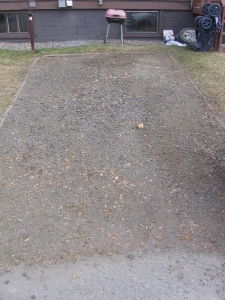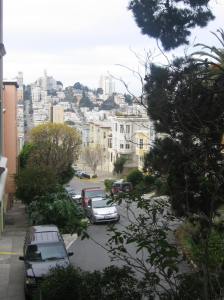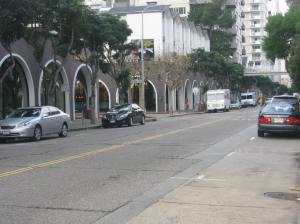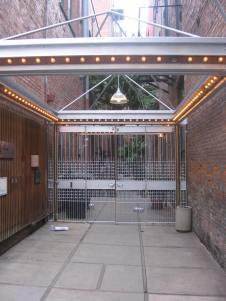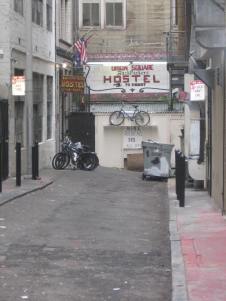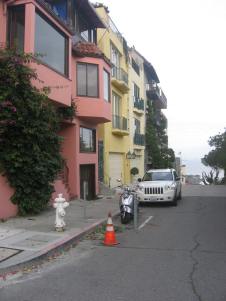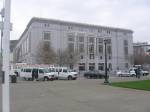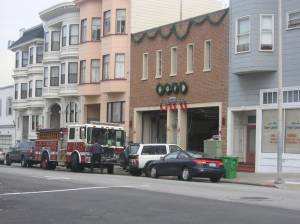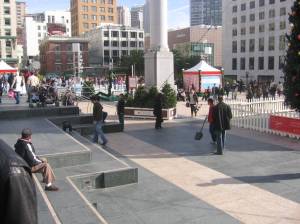Here’s a nice way to measure your neighborhood: Do you have ten interesting places?
I’ve just begun The Great Neighborhood Book: A Do-it-Yourself Guide to Placemaking by Jay Walljasper — a concise and uplifting guide to making a neighborhood not only worth living in, but worth envying. (I have added it to my “Further reading” page.) Like me, Walljasper envisions a neighborhood as more than a geographic region: it is a place for society, commerce, and beauty. It is a place where people have regular business and see each other often. It is “owned” by the locals.
In the introduction, he suggests an exercise in “zooming in” (my words). First, consider your region: write down the ten most important places you go, places you recommend to visitors. Then, zooming in, consider your city, and write down the ten most important places there — like a park or a neighborhood. Then,
“Zoom in and think about one of these places and try to write down the smaller places that make up the place. For example, if you named the main street as an important place, whate are the little places on that street where you enjoy spending time? You can shop there, of course, but if your main street is truly a good place, you can also sit outside on a bench and talk to your neighbors, get a cup of coffee nearby, and enjoy the passing scene.” (p. 4)
Over lunch, I decided to try this with my own neighborhood. What were the ten most interesting places within walking distance of my house?
First, a note about the above question. I stand firmly by the assertion that a neighborhood’s boundaries are limited by walking distance: you may be able to walk farther than the edge of your neighborhood, but if a place is too far to walk it’s not in your neighborhood. Also, “walking distance” is a fuzzy idea. Researchers on pedestrian behavior have found that most people are happy to walk places within five minutes; farther than that and they start choosing to drive, postpone their trip, or not go at all. Obviously, it reflects average, aggregate behavior, not the behavior of every individual. If we adhere strictly to this, a neighborhood (as a place you walk) will be no larger than a circle one half-mile in diameter: five minutes from center to edge. However, I’m willing to stretch this — if for no reason other than that Fairbanks is mostly not built that way, and I should cut us a little slack.
So, what were the most interesting places within walking distance of my house? I could think of only five:

Interesting places (green, yellow) near my house (in the yellow oval). Original image courtesy of Google Maps.
- Noel Wien Library
- Seoul Gate (Korean restaurant)
- Arctic Bowl (Bowling alley)
- Chena River, especially the waterfront by Lathrop Street
- Denali Elementary School (where my kids enjoy the playground)
Maybe I could go a little farther and include Gambardella’s or McCafferty’s, maybe the fountain downtown. My wife suggests Chartreuse, a new clothing store at First and Wickersham. But those all feel a little out of “my turf” — I don’t feel the same sense of ownership of them and of the streets around them.
In the image at right, note that where I live — near this peculiar triangle bounded by 6th, 8th, and Bonnifield — is about as far as it’s possible to get from all those destinations yet still be roughly “between” them. And the nearest is an eight-minute walk away (unless you count the Chena River, whose nearest point is only five minutes’ walk).
Eight minutes! I once looked at a Census map and discovered that my neighborhood was one of the most densely populated in the Fairbanks area. Why should anybody living in a densely populated neighborhood have to walk eight minutes to reach the nearest point of interest — especially when most people won’t leave their houses on foot for anything over five minutes away? People need reasons to walk: the pleasure of fresh air is not enough. If we have so few reasons to walk around our neighborhood, how are we going to meet our neighbors? and how are we to become neighborly?
So, Fairbanksans: tell me about your neighborhoods. Can you walk to ten interesting places? And what are they?
